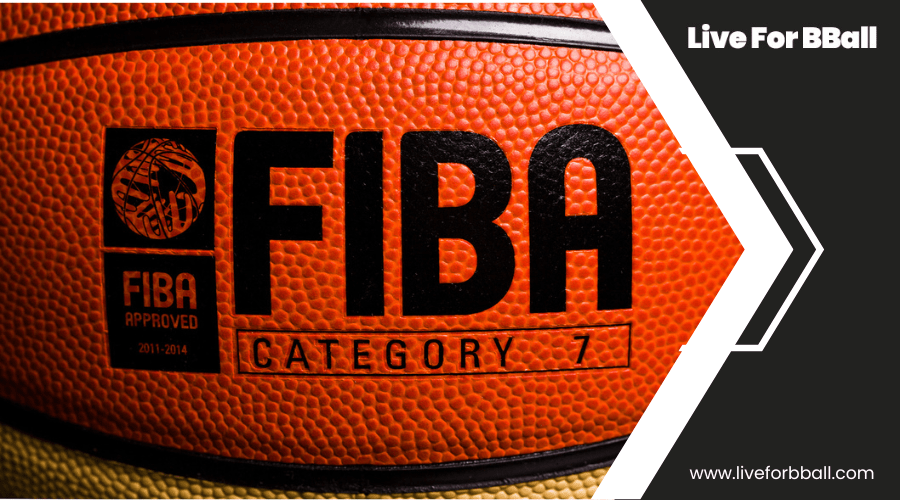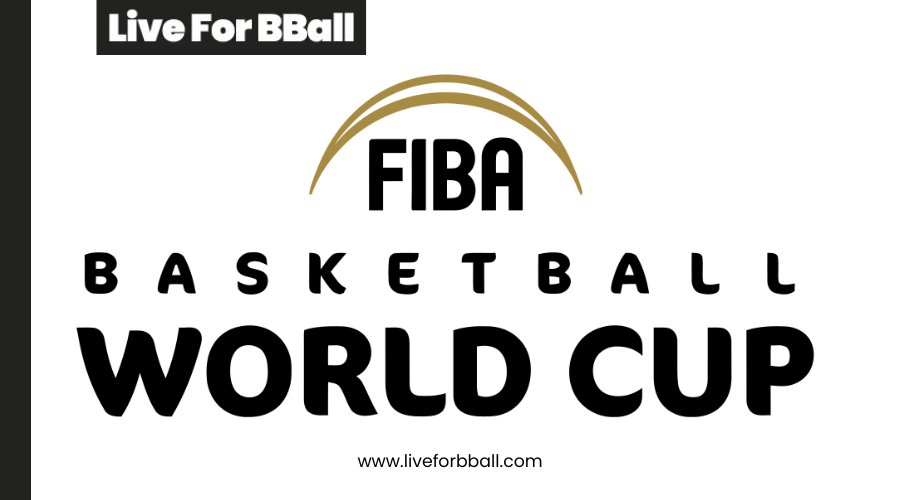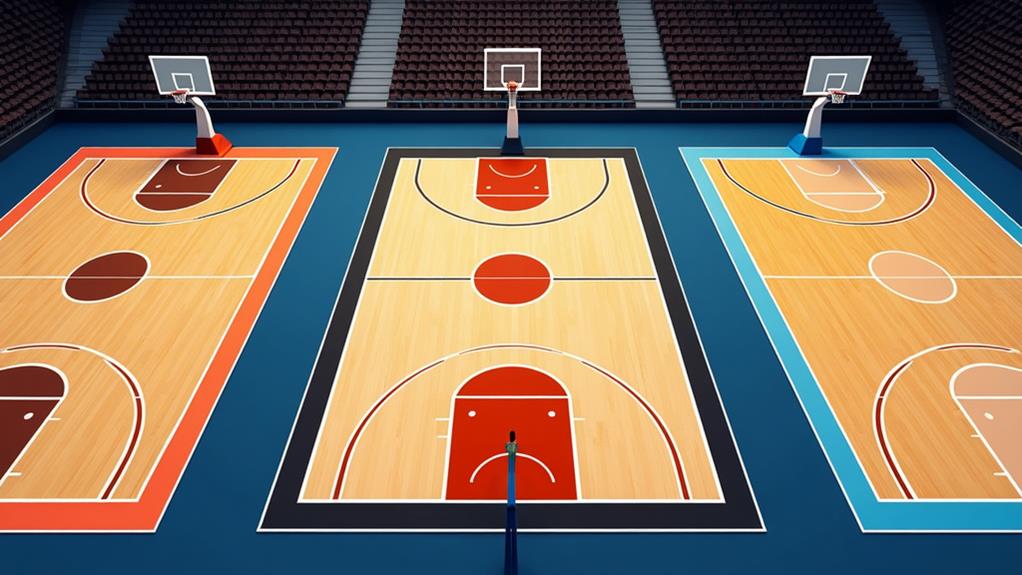Why Do FIBA and NBA Have Different Rules?
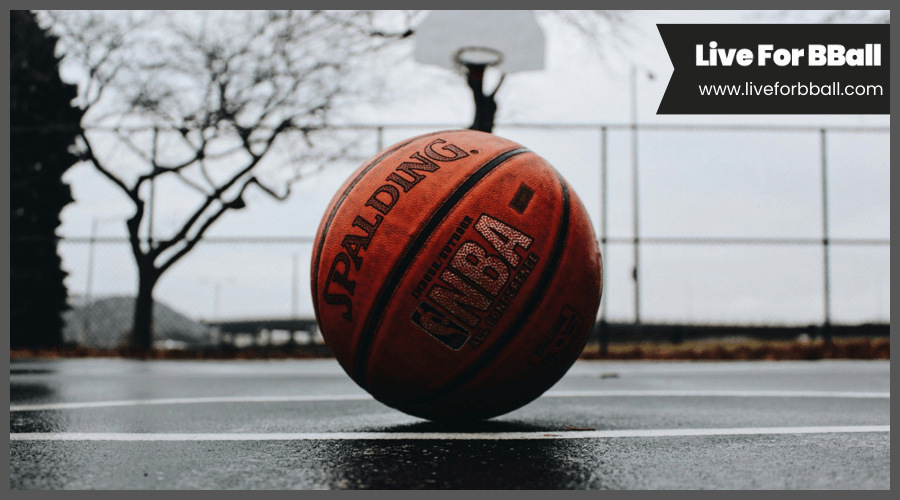
Have you ever wondered why FIBA and the NBA play by different rules? As you look into the world of basketball, you'll find that these differences aren't just arbitrary; they reflect a rich tapestry of history and culture that has shaped the game on both international and American soils.
From the variation in three-point range to the intricacies of foul classification, each set of rules tells a story of adaptation and preference. But what might seem like minor variations can significantly impact the game's flow and strategy. Let's explore what sets these two basketball powerhouses apart and how these distinctions influence the very fabric of the game.
Key Takeaways
- NBA rules focus on entertainment and spectacle, while FIBA rules emphasize global competition inclusivity.
- Differences in court configuration, like the three-point line, tailor to each organization's gameplay style.
- Game duration and timeout rules vary to suit the NBA's audience engagement and FIBA's fast-paced international matches.
- Player and coach adaptation to foul, timeout, and technical regulations is crucial for success across NBA and FIBA platforms.
Historical Background
FIBA and the NBA have historically developed their unique sets of rules, often influenced by their distinct focuses on global standardization and American entertainment, respectively. You've likely noticed these differences if you've watched both international competitions and U.S. professional games. The historical background of each organization plays a crucial role in understanding why these variances exist.
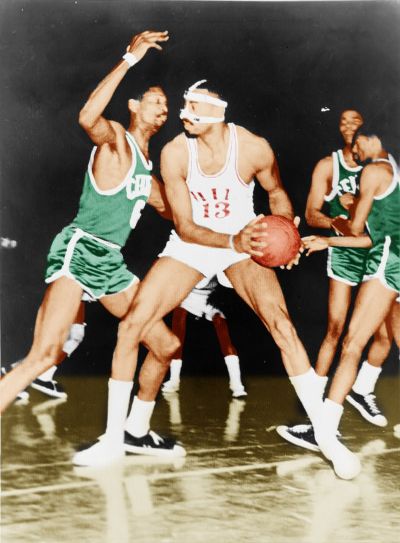
Let's delve into the origins. FIBA, focusing on the internationalization of basketball, crafted its rules to foster global competition. This emphasis on standardization across countries meant that rules had to be universally applicable, considering the diverse playing styles and strategies found worldwide. On the other hand, the NBA tailored its rules to suit American audiences, prioritizing entertainment and the fast-paced nature of the game that fans loved.
These distinct starting points led to the development of rules that reflect each organization's priorities. The NBA's evolution was heavily influenced by its desire to create a spectacle, making adjustments that would enhance the game's appeal to spectators and television audiences. Meanwhile, FIBA's rules have been shaped by the need to maintain a level playing field in international competitions, ensuring that the game remains accessible and fair for all participating nations.
Three-Point Range Variation
One of the most noticeable differences between NBA and FIBA basketball is the variation in the three-point line distance. This difference isn't just a matter of measurement; it significantly affects the game's dynamics, influencing shooting strategies and court spacing. Here's how:
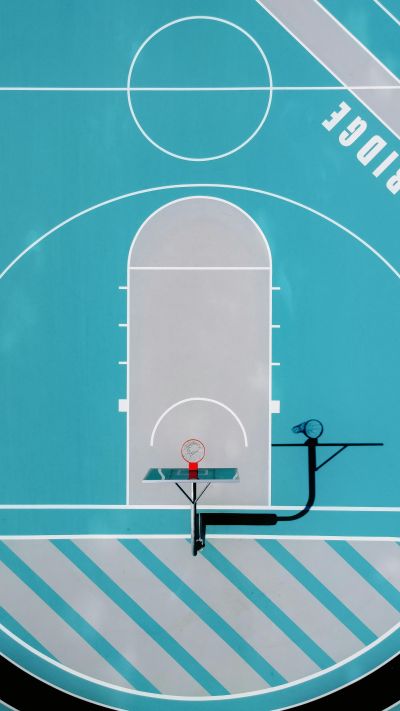
- Three-Point Line Distance: The NBA has a three-point line at 7.24 meters, while FIBA's sits at 6.75 meters. This discrepancy challenges players in both leagues to adjust their shooting techniques.
- Corner Three-Point Distance: The NBA features a shorter corner three at 6.7 meters, offering a unique scoring opportunity compared to FIBA's consistent line around the arc.
- Impact on Shooting Strategies: FIBA's shorter three-point distance encourages players to utilize more mid-range shots and drives to the basket, potentially leading to a more inside-oriented game.
- Court Spacing: NBA rules with a longer three-point line create wider court spacing, allowing for more diverse offensive plays and defensive strategies.
Understanding these differences in three-point line distance under FIBA and NBA rules is crucial for players, coaches, and fans alike, as it fundamentally alters how the game is played and strategized.
Game Duration Differences
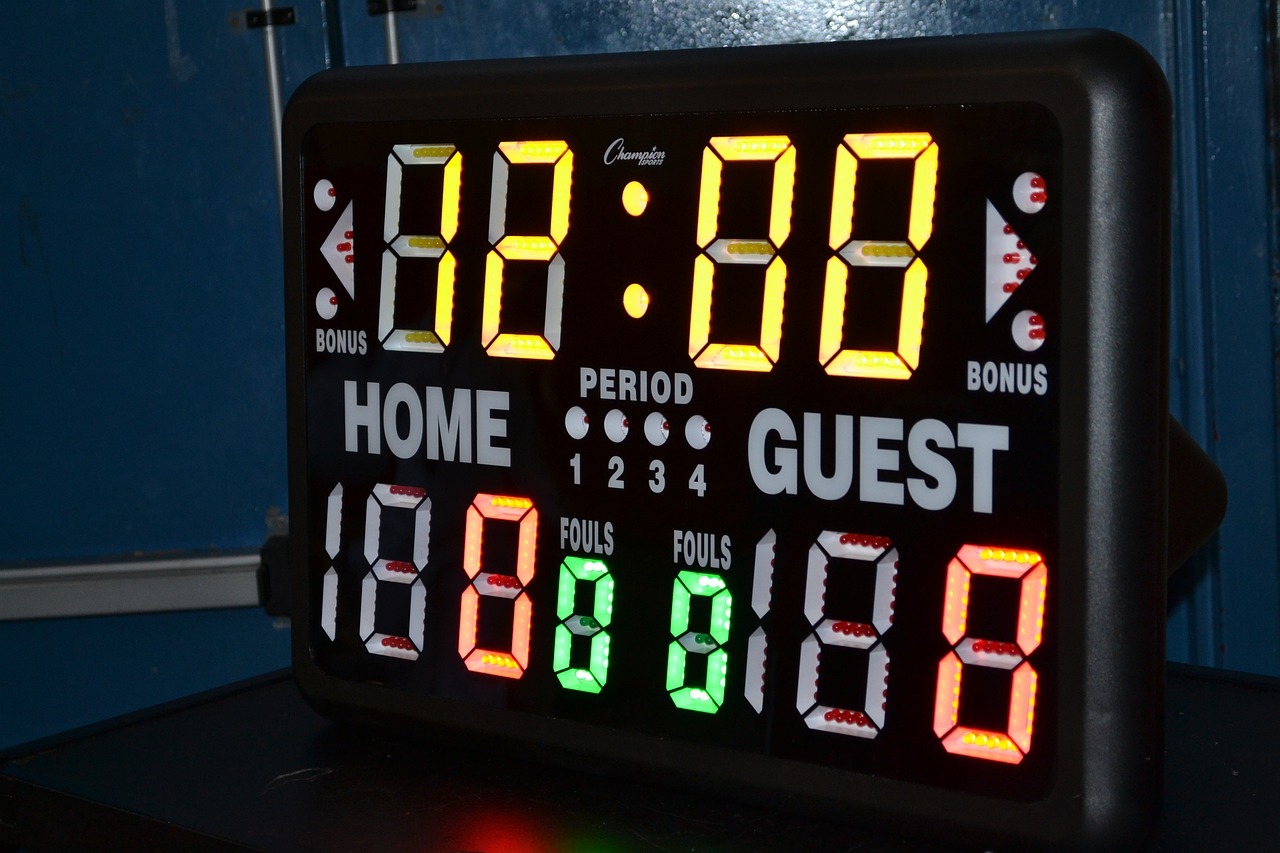
You'll find that the length of quarters, total game time, and overtime rules significantly vary between FIBA and NBA games. These differences not only affect the pace of the game but also demand distinct strategies and physical readiness from the players. Let's explore how these game duration differences influence the basketball experience in each league.
Quarter Length Variation
When comparing the NBA to FIBA, you'll notice that game durations differ significantly due to the quarter length variation, with NBA games lasting 48 minutes and FIBA games 40 minutes. This disparity in quarter length between the two leads to several key differences:
- Quarter Length: NBA quarters are 12 minutes long, whereas FIBA opts for 10-minute quarters.
- Pacing: FIBA's shorter quarters result in a faster-paced game, pushing teams to adapt their strategies.
- Player Fatigue: The reduced quarter length in FIBA games impacts player fatigue, potentially allowing for a more dynamic performance but also demanding efficient energy management.
- Strategic Decisions: Differences in quarter length necessitate distinct game management strategies, affecting substitutions, timeout calls, and overall team dynamics.
Total Game Time
FIBA games clock in at a brisk 40 minutes, a stark contrast to the NBA's longer 48-minute matchups, highlighting significant game duration differences that affect everything from player performance to strategic planning. This discrepancy in total game time not only dictates the pace but also influences how teams strategize. You've got to understand how this impacts player conditioning. In FIBA, athletes must adapt to a faster, more intense game flow, requiring peak physical fitness and strategic execution within shorter quarters. Conversely, NBA players navigate longer periods, demanding stamina and strategic adjustments throughout the extended gameplay.
| Aspect | FIBA | NBA |
|---|---|---|
| Total Game Time | 40 minutes | 48 minutes |
| Quarters | 4 x 10 minutes | 4 x 12 minutes |
| Impact | Faster pace | More strategy |
This difference fundamentally alters game management and overall competitiveness in each league.
Overtime Rules Differences
After exploring the overall game duration, let's now examine how FIBA and NBA handle overtime, highlighting another layer of differentiation in their rules. Both leagues follow a 5-minute overtime duration, but the context of these periods varies significantly:
- Overtime Duration: Both FIBA and NBA have a 5-minute overtime, ensuring a fast-paced and urgent continuation of the game.
- Impact of Quarter Length: FIBA's shorter 10-minute quarters add a unique urgency and intensity to its overtime, contrasting with the NBA's longer quarters.
- Consistency: Maintaining the same overtime duration across games promotes fairness and consistency in both leagues.
- Influence on Strategy: The varying quarter lengths influence the intensity and strategy used in overtime, as teams must adapt quickly to secure a win.
This nuanced approach to overtime rules underscores the differences in gameplay and strategic planning between the two leagues.
Timeout Rules
Understanding the differences in timeout rules between the NBA and FIBA can significantly impact your strategy as a coach or player. The NBA allows for 7 timeouts per team, while FIBA permits only 2 timeouts in the first half and 3 in the second. This disparity means you've got to plan your timeout strategy more meticulously in FIBA games, considering you've got fewer chances to halt the game and strategize.
Moreover, the duration of timeouts differs too. In the NBA, you've got 100 seconds per timeout, giving you a bit more time to discuss plays and catch a breath. On the other hand, FIBA keeps it short and sweet with just 60 seconds. This difference puts a premium on quick, effective communication in FIBA matches.
Another crucial difference is the carryover of unused timeouts. In the NBA, if you don't use all your timeouts in the first half, you can bring them into the second half. FIBA doesn't allow this, adding another layer to your strategic planning.
Lastly, FIBA has strict rules on when timeouts can be called during critical game moments, forcing you to be even more strategic about your timeout usage. Managing timeouts effectively plays a key role in controlling the game's momentum and flow, regardless of the league.
Foul Classification
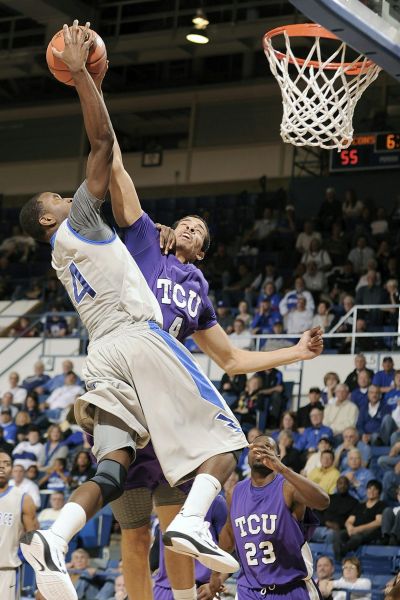
As you explore the differences in foul classification between FIBA and NBA, you'll notice variations in how foul severity levels are determined, the way penalties are implemented, and the criteria for technical fouls. These distinctions not only affect the pace and intensity of the game but also demand different strategies from players and coaches. Understanding these differences is crucial for grasping how the game's flow and player decisions are influenced under each set of rules.
Foul Severity Levels
When comparing FIBA and NBA rules, it's crucial to note the difference in foul severity levels, where FIBA's 5-foul limit demands greater discipline from players than the NBA's 6-foul allowance. This difference significantly impacts how games are played, especially in high-stakes tournaments like the FIBA Basketball World Cup. Here are the key points to understand:
- FIBA's 5-foul limit emphasizes player discipline to avoid early disqualification.
- NBA players have more leeway with a 6-foul limit, affecting their aggressiveness and defensive strategies.
- The different foul limits influence playing styles, with FIBA requiring a more cautious approach.
- Players transitioning between leagues must adapt their game to accommodate these foul severity levels, impacting their effectiveness on the court.
Penalty Implementation Differences
FIBA and NBA differentiate significantly in how they implement penalties, particularly in their approach to foul classification, affecting the game's pace and players' strategies.
In the NBA, players can accumulate up to 6 personal fouls before fouling out, which fosters a slightly more physical style of play. On the other hand, FIBA's 5-foul limit, coupled with stricter foul classification, aims to maintain game flow and curb excessive physicality.
This lower foul limit forces players to engage more cautiously, adopting a more strategic approach to avoid early disqualification. For players transitioning between the NBA and FIBA, grasping these differences in foul limit and the overarching philosophy towards physicality and game flow is crucial. It fundamentally alters how they navigate the game, ensuring they adapt their play style accordingly.
Technical Foul Criteria
Understanding the differences in technical foul criteria between FIBA and NBA is crucial for players to adapt their behavior and strategy on the court. Here's what you need to know about how these organizations handle technical fouls:
- NBA technical fouls are separate from personal fouls and lead to free throws for the opposite team, directly influencing the game's score.
- FIBA considers technical fouls as personal fouls, counting towards a player's limit of five fouls, affecting their playtime and team dynamics.
- Player behavior is closely monitored in both leagues; unsportsmanlike conduct or arguing with officials can easily result in technical fouls, emphasizing the importance of maintaining composure.
- These criteria are vital for game control and upholding sportsmanship, ensuring a fair and respectful playing environment.
Goaltending Regulations
Goaltending rules vary significantly between the NBA and FIBA, affecting how players approach defensive strategies near the rim. In FIBA, the allowance for any player to legally touch the ball once it hits the rim opens up aggressive defensive plays and a more physical style of play. Conversely, the NBA's restriction on goaltending once the ball is on a downward trajectory limits such actions, impacting shot-blocking strategies and defensive timing. For transitioning players, understanding these differences is crucial.
Here's a quick comparison:
| Aspect | NBA | FIBA |
|---|---|---|
| Ball Touching | Prohibited on downward trajectory | Allowed once it hits the rim |
| Defensive Plays | More restricted | More aggressive |
| Shot-Blocking Strategies | Timing critical | More opportunities |
| Style of Play | Less physical near the rim | More physical |
| Transitioning Players | Need adjustment to rules | Must adapt to less restriction |
These rules not only shape the game's dynamics but also influence how players develop and refine their defensive techniques. Whether it's adapting to the more stringent NBA rules or exploiting FIBA's more lenient goaltending regulations, players must adjust their game accordingly to succeed in different competitions.
Jump Ball Procedures

After exploring how goaltending regulations vary, let's now examine the distinct jump ball procedures in the NBA and FIBA. The jump ball is a critical element in basketball, dictating possession and, by extension, strategy. Yet, the NBA and FIBA approach this key moment with different rules.
- Initial Jump Ball: In the NBA, jump ball situations occur at the start of the game and each overtime period, setting the stage for a battle of agility and timing. Conversely, FIBA rules stipulate that after the initial jump ball, the team winning possession starts the game, and subsequent possessions are determined differently.
- Possession Rules: The NBA ensures fairness in jump ball possessions throughout quarters with specific guidelines. This contrasts with FIBA's approach, where possession alternates after the initial jump ball, aiming to maintain balance without repeated jump ball scenarios.
- Impact on Strategy: Both leagues recognize jump balls as pivotal moments. The NBA's method allows for a direct contest for possession at critical game junctures, while FIBA's alternating possession rule reduces the number of jump balls but still retains strategic importance.
- Promotion of Balance: FIBA's rules are designed to ensure a balanced game flow by avoiding continuous jump balls, which contrasts with the NBA's emphasis on direct competition for possession during these key moments.
Reviewing Plays
When it comes to reviewing plays, the NBA and FIBA diverge significantly in their approaches, with the NBA employing a more extensive instant replay system. You'll find that while the NBA leverages a comprehensive replay system, FIBA opts for a more restrained use of instant replay. This distinction highlights each organization's priorities concerning officiating, fairness, and game flow.
In the NBA, the instant replay rules are multifaceted, including coach's challenges, trigger reviews, and mandatory reviews in certain situations. This allows for a thorough examination of calls and decisions, aiming to ensure fairness and accuracy in officiating. On the other hand, FIBA's approach is more about keeping the game moving. They limit the use of instant replay to specific incidents, thereby minimizing disruptions and maintaining the pace of the game.
This difference in rules reflects the leagues' unique philosophies. The NBA's extensive use of replay underscores its focus on precision in officiating, while FIBA's limited application indicates a preference for game flow and speed. As a fan or player, understanding these nuances helps you appreciate the distinct experiences each basketball league offers.
Defensive Violations
Navigating the realm of defensive violations, you'll discover a stark contrast between NBA and FIBA rules, notably in their stance on the defensive three-second violation. While the NBA enforces this rule to discourage defenders from remaining in the paint too long, FIBA opts for a more lenient approach by not implementing such a restriction. This fundamental difference not only shapes defensive tactics but also influences the overall flow of the game.
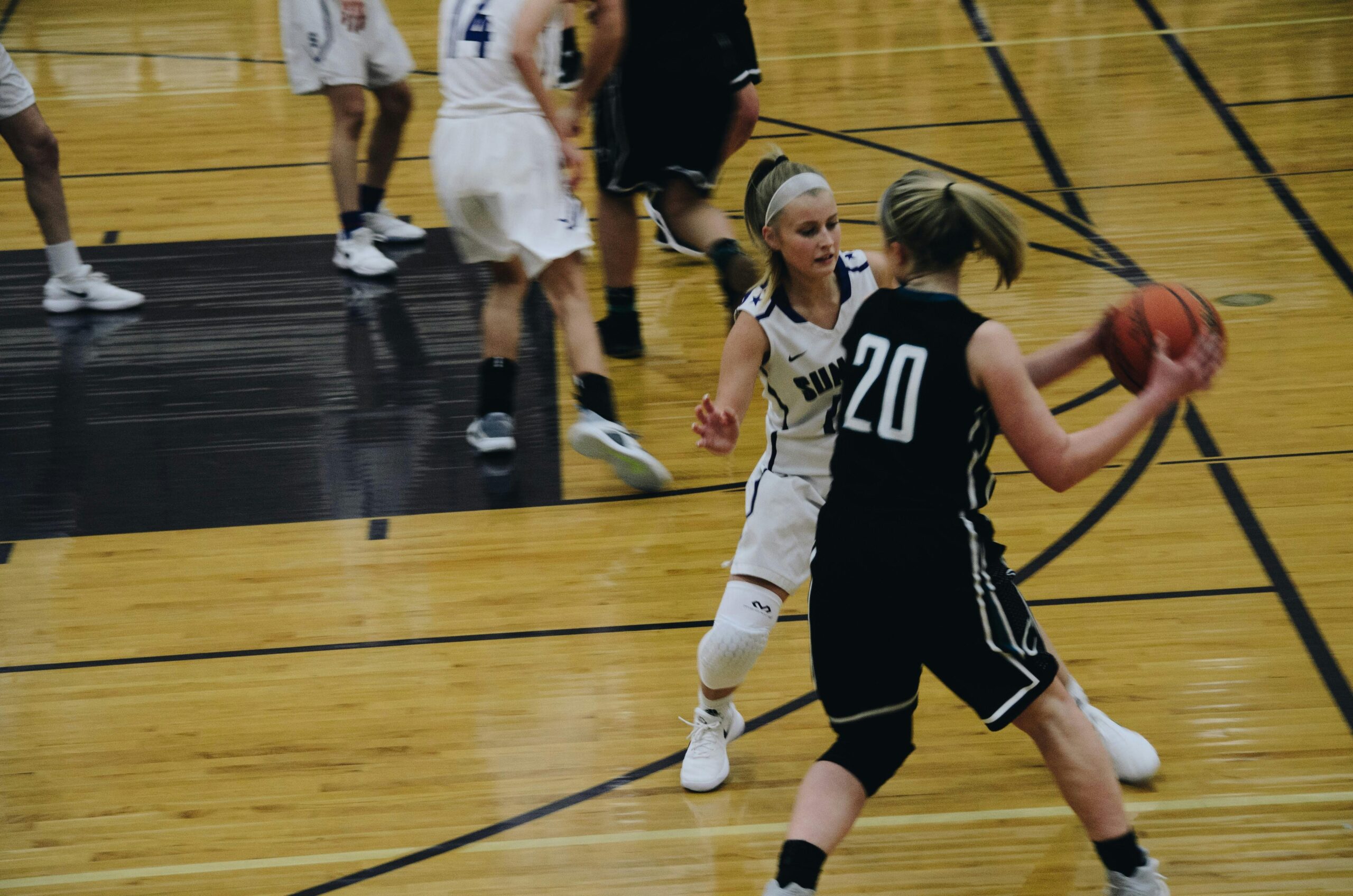
To understand the impact of these variations, consider the following aspects:
- Defensive Three-Second Violations: In the NBA, this rule prevents defenders from camping in the lane, aiming to foster a more dynamic and offensively engaging game.
- Lane Protection: FIBA's lack of a defensive three-second rule allows for more rigid lane protection, affecting how teams set up their defense.
- Defensive Strategies: The absence of this rule in FIBA encourages a different approach to defense, where teams might focus more on zone defense or packing the paint.
- Playing Styles: These divergent rules contribute to the distinct playing styles observed in NBA and FIBA games, with the former often showcasing a faster pace and more isolation plays.
Understanding these defensive violations highlights how rules can profoundly influence basketball's playing style and defensive strategies.
Conclusion
In conclusion, you've seen how FIBA and the NBA's different rules stem from their unique historical backgrounds and geographical influences. These variations in three-point range, game duration, timeout rules, foul classification, goaltending regulations, jump ball procedures, and play reviews enhance the distinctiveness of each league.
Understanding these differences helps you appreciate the global diversity of basketball, highlighting that there's no one-size-fits-all approach to the game. It's these distinctions that make basketball truly a global sport.

